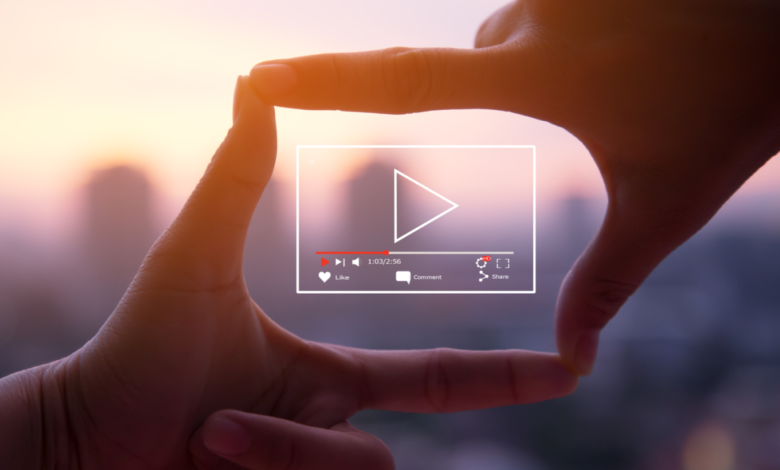The Power of Video Content: Why It Dominates the Digital World

Introduction: Why Video Content Is Everywhere
You’ve probably noticed by now—whether you’re scrolling through Instagram, watching YouTube, or attending a virtual meeting—video content is taking over the digital landscape. It’s not just a trend anymore; it’s the present and future of online engagement. Why? Because video is visual, engaging, and easier to consume than walls of text. It also caters to short attention spans (thanks, TikTok!) and gives businesses, creators, and educators a chance to connect on a deeper level with their audiences.
We live in a world where attention incestflix is currency. Brands and creators have just a few seconds to capture it. That’s where video steps in—offering a mix of storytelling, education, entertainment, and emotion all rolled into one medium. From explainer videos to vlogs and live streams, the possibilities are endless.
In this article, we’ll break down the importance of video content, the types that work best, tips for creating high-quality videos, and how you can effectively leverage them in your personal brand or business strategy.
The Rise of Video Content in the Digital Age
Video content isn’t new, but the way we use and consume it has dramatically evolved. Just ten years ago, YouTube was the primary platform for uploading and viewing videos. Fast forward to now, and nearly every social media platform is built around video—think Reels, TikToks, and even video tweets.
According to recent studies, more than 80% of internet traffic is video-based. Why is this happening? A few reasons:
- Faster Internet Speeds: The rise of broadband and 5G makes video streaming seamless, even on mobile.
- Social Media Algorithms: Platforms like Instagram and Facebook prioritize video over other forms of content.
- Consumer Behavior: People just prefer watching over reading. It’s easier, faster, and more dynamic.
Businesses have noticed too. Marketing teams now allocate large portions of their budgets to video production, knowing it delivers higher engagement and conversion rates. Whether it’s a product demo or a testimonial, a good video can build trust faster than any blog post ever could.
Types of Video Content That Perform Best
Not all video content is created equal. Different types serve different purposes, and choosing the right one can be the key to reaching your goals. Let’s explore some of the most effective formats:
1. Explainer Videos
These short, informative videos break down complex topics into simple, digestible pieces. Great for introducing products, services, or even concepts in education. Animated or live-action, these videos are perfect for websites, social media, and email campaigns.
2. Vlogs (Video Blogs)
Vlogs are more personal and relatable. They allow brands or individuals to show behind-the-scenes moments, share thoughts, or tell stories. YouTube is full of successful vloggers who’ve turned daily routines into high-earning businesses.
3. Tutorials and How-Tos
This type of video is all about value. Whether you’re teaching how to bake a cake, code a website, or use a new app, how-to videos establish authority and keep viewers coming back for more.
4. Product Demos and Reviews
People want to see a product in action before they buy it. A demo can showcase features, while a review builds trust. These are particularly popular in tech, beauty, and lifestyle industries.
5. Live Streams
Live video has exploded in popularity. It adds a real-time, authentic element that pre-recorded content can’t match. It’s also interactive—audiences can ask questions, react, and engage directly with the host.
Benefits of Video Content for Brands and Creators
Why should you invest in video? Whether you’re a solo content creator, a small business, or a big brand, the benefits are universal.
1. Higher Engagement Rates
Video posts get significantly more likes, shares, and comments than text or image posts. People are more likely to watch a video to the end than read a long article, especially on social media.
2. Better SEO Performance
Search engines love video. Adding video content to your website can improve your ranking on Google, increase time spent on your site, and reduce bounce rates. YouTube itself is the second-largest search engine in the world.
3. Boosted Conversion Rates
Studies show that including a video on a landing page can increase conversions by over 80%. When viewers can see a product or service in action, they’re more likely to trust it—and buy it.
4. Stronger Emotional Connection
Video allows for facial expressions, tone, background music, and more. All these elements help create a stronger emotional bond with your audience, making your message more memorable and impactful.
Tips for Creating High-Quality Video Content
You don’t need a Hollywood budget to create compelling videos. With smartphones, editing apps, and a little know-how, anyone can produce professional-looking content. Here are some tips:
1. Plan Before You Shoot
Start with a script or outline. Know what message you want to convey and what action you want your audience to take. This saves incestflix time during editing and helps you stay on message.
2. Keep It Short and Sweet
Attention spans are short—especially online. Try to keep your videos concise. If you have a longer message, break it into smaller segments or create a series.
3. Invest in Good Lighting and Sound
Poor lighting and audio can ruin an otherwise great video. Natural light works wonders, but a simple ring light or external mic can dramatically improve quality.
4. Edit Like a Pro (Even If You’re Not One)
There are tons of free and paid tools like CapCut, iMovie, Adobe Premiere Rush, and Canva that make editing easy. Add subtitles, transitions, and background music for a polished final product.
5. Optimize for Different Platforms
Each platform has its quirks. Square videos work best on Instagram, while vertical videos dominate TikTok and YouTube Shorts. Always tailor your content to where it will be posted.
How to Use Video Content in Your Strategy
Once you’ve created your videos, the next step is distribution. Here’s how to maximize the impact of your content.
1. Use Video Across Multiple Channels
Don’t limit yourself to just one platform. Upload your videos to YouTube, embed them on your website, repurpose them for Instagram, Facebook, TikTok, LinkedIn—you name it.
2. Add Video to Email Marketing
Emails with video can increase click-through rates by up to 300%. You don’t have to embed the whole video; even a thumbnail with a play button linking to your site can do the trick.
3. Track Performance
Use analytics to see what’s working. Monitor metrics like watch time, click-through rate, shares, and comments. This helps you understand your audience and improve future videos.
The Future of Video Content
Looking ahead, video content will only become more immersive and interactive. With technologies like AR (Augmented Reality), VR (Virtual Reality), and AI-generated video, the possibilities are exploding. Think virtual try-ons, 360-degree product views, or real-time language translation.
Video will also play a bigger role in education and training. Online courses, onboarding materials, and even corporate meetings are moving toward video-first communication models.
Conclusion: It’s Time to Get in Front of the Camera
Whether you’re a beginner or a seasoned marketer, now is the time to embrace video content. It’s powerful, versatile, and only growing in importance. From boosting engagement to building trust and improving SEO, video offers a massive return on investment—if done right.
You don’t need fancy equipment or a huge budget. All you need is a plan, a message, and the willingness to hit “record.” So what are you waiting for? Lights, camera, action!



